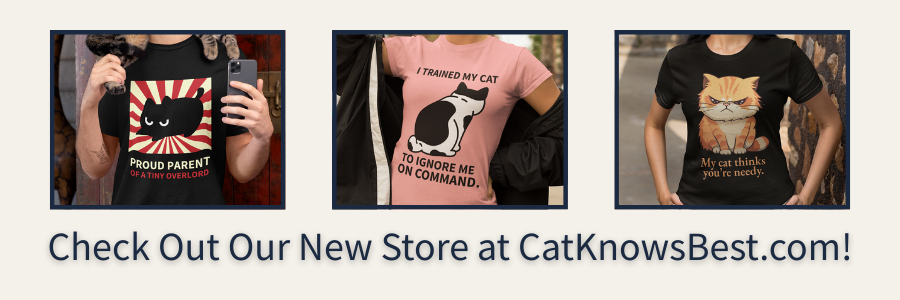Cats may always be kittens at heart, but around the age of 11, their bodies start telling a different story. That once-effortless leap onto the fridge might be replaced with a careful climb, and naptime somehow expands to cover most of the day. Understanding the aging process and adjusting your routines accordingly is essential for maintaining your cat’s quality of life. Proper senior cat care is about more than just comfort. It’s about dignity, health, and keeping the purrs going strong well into their golden years.
When Is a Cat Considered a Senior?
Cats are generally considered “senior” around age 11 and “geriatric” at 15 and beyond. Of course, every cat is different. Some 14-year-olds still tear through the hallway at 2 a.m. like it’s kitten hour, while others begin to slow down earlier.
Just like people, aging in cats is influenced by genetics, diet, lifestyle, and veterinary care. The key is to recognize that even healthy senior cats need a little extra attention and some age-appropriate adjustments.
Common Physical and Behavioral Changes in Aging Cats
As your cat gets older, their needs shift, sometimes subtly, sometimes dramatically. Understanding what’s normal and what’s not can help you spot problems early and adjust your caregiving approach.
Slower Movements and Less Jumping
You may notice your cat hesitating before leaping onto a counter or choosing lower places to rest. Arthritis and muscle loss are common in older cats, making mobility a bit more complicated.
Increased Napping and Less Play
It’s not laziness. It’s biology. Older cats naturally spend more time sleeping and less time chasing toys across the room. However, they still need mental stimulation and gentle physical activity.
Weight Changes
Some senior cats lose weight due to muscle loss or decreased appetite. Others gain weight from being less active. Either extreme can signal health issues and should be monitored closely.
Changes in Grooming
Your cat may become less flexible and stop grooming thoroughly, especially around the back and tail. This can lead to matted fur or dandruff.
Litter Box Issues
Arthritic cats might struggle to get into high-sided litter boxes or may have trouble making it to the box in time. Cognitive decline can also affect litter habits.
Personality Shifts
A formerly aloof cat may become clingier, while a once-cuddly companion might want more alone time. Behavioral changes can reflect pain, confusion, or stress.
Creating a Senior-Friendly Environment
Adapting your cat’s living space doesn’t require a total overhaul, just a few thoughtful changes to help them stay comfortable, safe, and confident.
Add Ramps and Steps
If your cat can’t make their favorite jumps, provide pet stairs, ramps, or rearrange furniture to give them easier access to beds and windows.
Use Low-Sided Litter Boxes
Swap out high-entry boxes for ones with lower sides that are easier on aging joints.
Provide Warm, Supportive Beds
Older cats love warm, soft places to rest. Orthopedic or heated beds can help ease joint stiffness and offer a comforting retreat.
Keep Essentials Close
Place food, water, and litter boxes on each level of the home to reduce the need for stairs.
Improve Traction
Add rugs or non-slip mats to slick floors so your cat doesn’t slide when walking or trying to jump.
Feeding for Longevity
Your cat’s nutritional needs change with age. Senior cats may require more protein, easier-to-digest food, and supplements for joint and kidney health.
Talk to Your Vet About Diet
Your vet may recommend a senior-specific food or a prescription diet for conditions like kidney disease or diabetes.
Monitor Appetite Closely
Loss of appetite can be a red flag for dental disease, thyroid problems, or organ decline.
Encourage Hydration
Older cats are more prone to dehydration. Increase water intake by offering wet food, adding broth to meals, or using a cat water fountain.
Health Screenings and Vet Visits
One of the most important aspects of senior cat care is proactive health monitoring. Many age-related diseases are manageable when caught early.
Schedule Twice-Yearly Checkups
Senior cats should see the vet every six months. These visits should include:
- Weight checks
- Bloodwork (including kidney and thyroid function)
- Blood pressure measurement
- Urinalysis
- Dental exams
Watch for Silent Conditions
Common senior cat health issues include:
- Chronic kidney disease
- Hyperthyroidism
- Arthritis
- Hypertension
- Diabetes
- Cognitive dysfunction
These conditions often have subtle signs. Regular screenings help detect them before symptoms become severe.
Supporting Emotional and Cognitive Health
Aging affects more than the body. Some cats experience cognitive changes similar to dementia, while others become more anxious or clingy.
Provide Mental Stimulation
Even older cats need fun. Try:
- Puzzle feeders
- Gentle wand play
- New scents or textures (cat-safe herbs, blankets, or toys)
Keep Routines Predictable
Senior cats thrive on consistency. Try to feed, play, and interact at the same times each day.
Be Patient and Flexible
If your cat seems confused, vocalizes more at night, or forgets where the litter box is, talk to your vet about cognitive dysfunction. There are supplements and medications that may help.
Grooming and Hygiene for Older Cats
Because grooming often declines with age, a little help from you can go a long way.
Brush More Often
Regular brushing helps prevent mats, distributes skin oils, and gives you a chance to check for lumps, bumps, or injuries.
Clean Eyes and Ears
Use a soft, damp cloth to gently wipe away buildup. Avoid cotton swabs or harsh cleaners unless advised by your vet.
Trim Nails Carefully
Older cats may stop wearing down their claws naturally. Overgrown nails can curl into paw pads, causing pain or infection.
The Role of Comfort and Companionship
Senior cats need you more than ever, even if they’re not as active or vocal about it. Your attention, patience, and presence offer them stability during a time of change.
- Respect their need for quiet and rest
- Offer affection on their terms
- Speak gently and move slowly
- Let them set the pace for play and interaction
Your cat might not chase feathers like they used to, but they’ll still appreciate a cozy lap, a soft blanket, and the occasional chin scratch.
Final Thoughts
Caring for a senior cat is a beautiful, meaningful chapter in your life together. With a few simple changes and a lot of heart, you can help your cat age with grace, comfort, and plenty of purrs.
Understanding the aging process in cats and adjusting your care routines for older felines is the key to maintaining not just longevity, but joy. The kitten energy may fade, but the bond only grows stronger.
So fluff the pillows, warm the bed, and keep the treats within reach. Your older cat has earned the royal treatment, and you’ve earned the privilege of giving it.
Sources:
Cornell Feline Health Center – Senior Cat Care
CatFriendly.com – 10 Ways to Care for Your Senior Cat
Recent Posts
Your Cat Might Be a Furry Little Healer… or at Least a Fuzzy Alarm System If you’ve ever had your cat suddenly become extra clingy when you’re under the weather, you’re not alone. From...
Cats are experts at hiding things, socks under furniture, their disdain for your playlist, and, unfortunately, symptoms of illness. In the wild, showing weakness could make them a target, so even...


